Elegant, easy to grow, and always in style—peace lilies are one of the most beloved houseplants in the world. Known scientifically as Spathiphyllum, peace lilies are prized for their lush green foliage and graceful white spathes (often mistaken for flowers), which rise like flags of peace from the plant’s core. They also rank high as natural air purifiers, making them ideal for homes and offices alike.
If you’re a beginner looking for a low-maintenance plant that rewards you with beauty and cleaner air, this complete guide to growing peace lilies will walk you through everything you need to know—from planting and watering to repotting and troubleshooting common problems.
Chapter 1: Why Grow a Peace Lily?
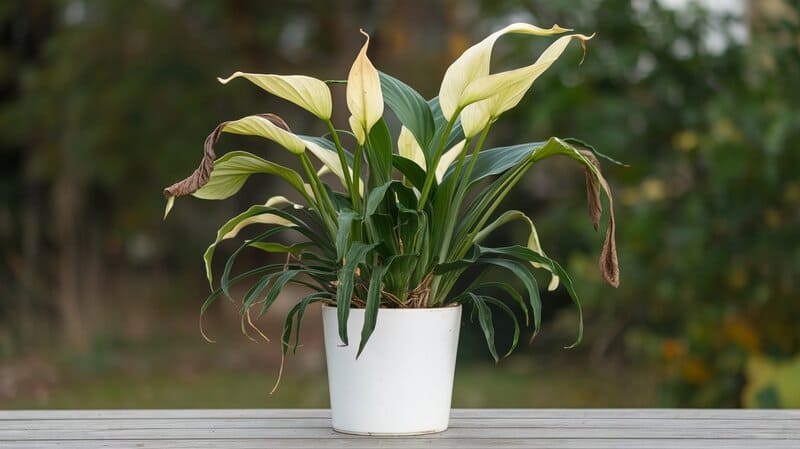
Peace lilies are perfect for new plant parents because they are:
- Low-maintenance and forgiving of occasional neglect
- Adaptable to low-light indoor conditions
- Natural air purifiers, removing toxins like benzene and formaldehyde
- Visually calming, with deep green leaves and sculptural white blooms
With a little care, these tropical plants can bloom year-round, adding a sense of calm and elegance to any indoor space.
Chapter 2: Choosing the Right Peace Lily
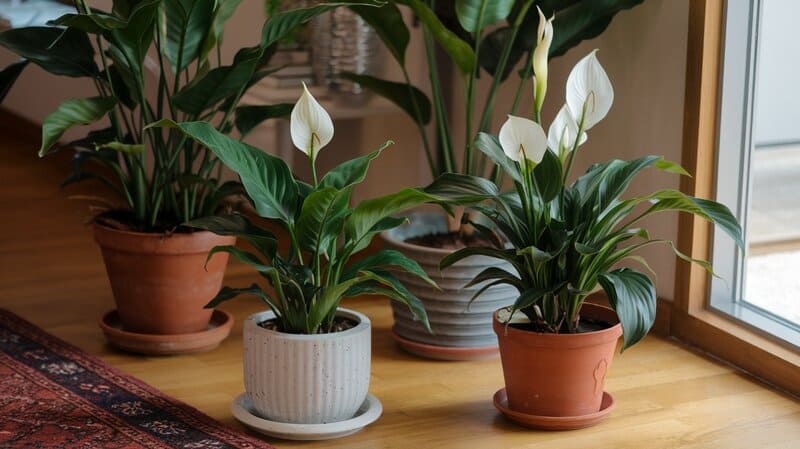
There are several varieties of peace lilies, ranging in size and leaf shape:
- Spathiphyllum wallisii: Compact and ideal for small spaces
- Spathiphyllum ‘Mauna Loa’: Larger with glossy leaves and taller blooms
- Spathiphyllum ‘Sensation’: A bold variety with broad leaves and impressive height
- Petite Peace Lily: A dwarf cultivar perfect for tabletops or desks
Choose based on your available space, lighting, and desired aesthetic.
Chapter 3: Ideal Conditions for Planting
1. Pot and Soil Requirements
- Use a well-draining pot with a drainage hole.
- Ideal soil mix: potting mix + perlite or sand for aeration.
- Peace lilies prefer slightly acidic to neutral pH (6.0–7.0).
Repot your peace lily into a container that’s only 1–2 inches larger than its root ball to prevent overwatering issues.
2. Lighting Conditions
Peace lilies thrive in indirect, filtered light.
- Best: Bright, indirect sunlight (near east- or north-facing windows)
- Tolerates: Low-light rooms or fluorescent-lit offices
- Avoid: Direct sunlight, which can scorch the leaves
Chapter 4: Watering Your Peace Lily
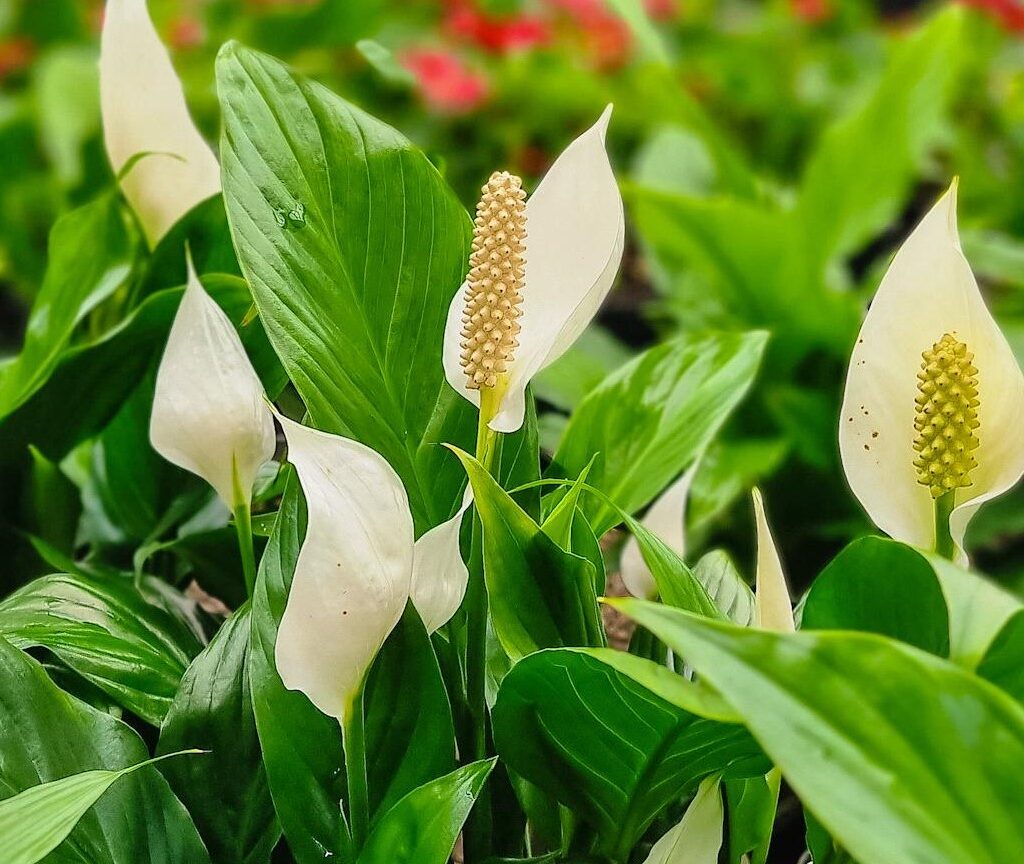
Watering is where most newbies struggle—but peace lilies actually help you out: they droop when thirsty!
How Often to Water:
- Typically, once a week is sufficient in moderate indoor climates.
- In warmer months, water every 4–5 days.
- In winter, reduce to every 10–14 days.
Watering Tips:
- Check if the top 1–2 inches of soil are dry before watering.
- Use room temperature, filtered or distilled water (they’re sensitive to fluoride and chlorine).
- Avoid letting the plant sit in standing water—empty saucers after watering.
Chapter 5: Fertilizing Peace Lilies
While peace lilies don’t need much feeding, the right fertilizer can help them bloom more frequently.
- Use a balanced houseplant fertilizer (10-10-10 or 20-20-20).
- Dilute to half-strength and apply once per month during spring and summer.
- Avoid fertilizing in the dormant season (fall/winter).
Too much fertilizer can cause leaf burn or brown tips, so less is more with peace lilies.
Chapter 6: Temperature and Humidity Needs
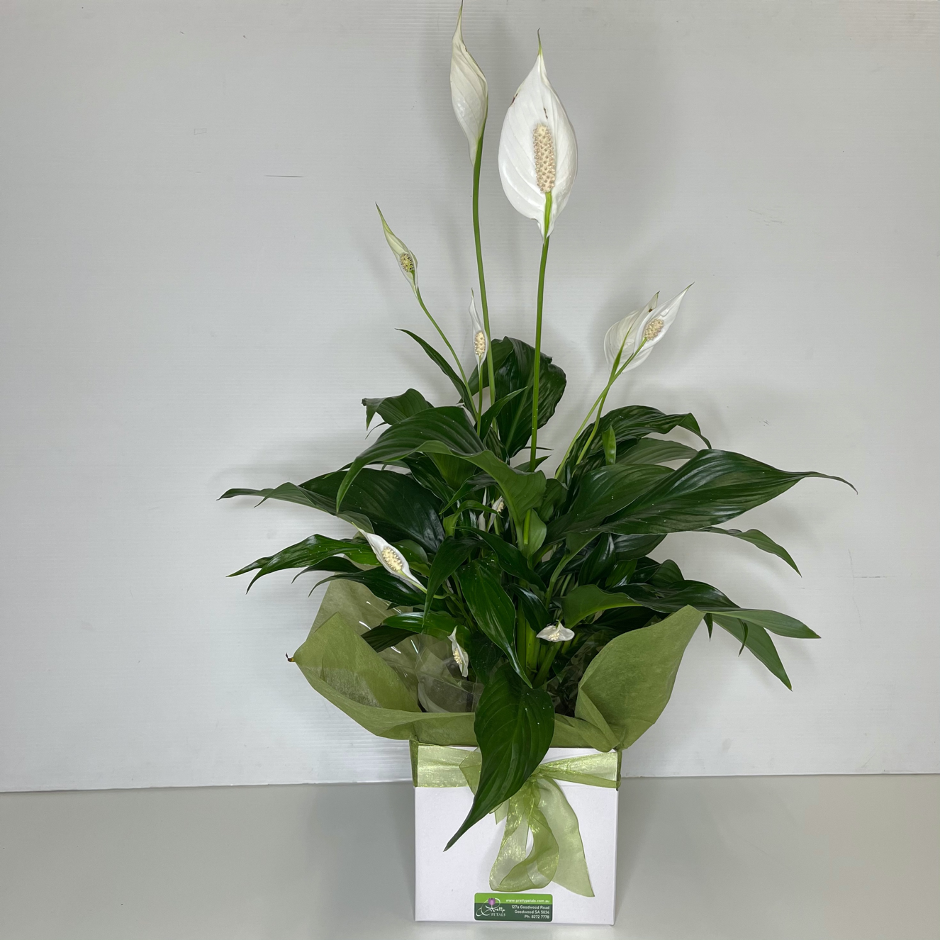
Peace lilies are native to tropical rainforests, so they appreciate warmth and moisture.
- Temperature Range: 65–85°F (18–29°C)
- Humidity: 50–70% is ideal
If the air is dry:
- Mist the leaves every few days.
- Place the pot on a humidity tray (a shallow dish filled with water and pebbles).
- Group it with other plants to create a microclimate.
Avoid cold drafts and temperatures below 50°F (10°C), which can damage or kill the plant.
Chapter 7: Encouraging Peace Lily Blooms
Many beginners wonder: Why isn’t my peace lily flowering?
To encourage blooms:
- Ensure it gets bright, indirect light (but not too much)
- Use fertilizer sparingly in spring
- Keep it slightly root-bound (they bloom better when a bit snug in their pot)
- Trim dead blooms to redirect energy
Peace lily blooms are long-lasting (up to 2 months) and will appear multiple times a year with the right care.
Chapter 8: Repotting and Pruning
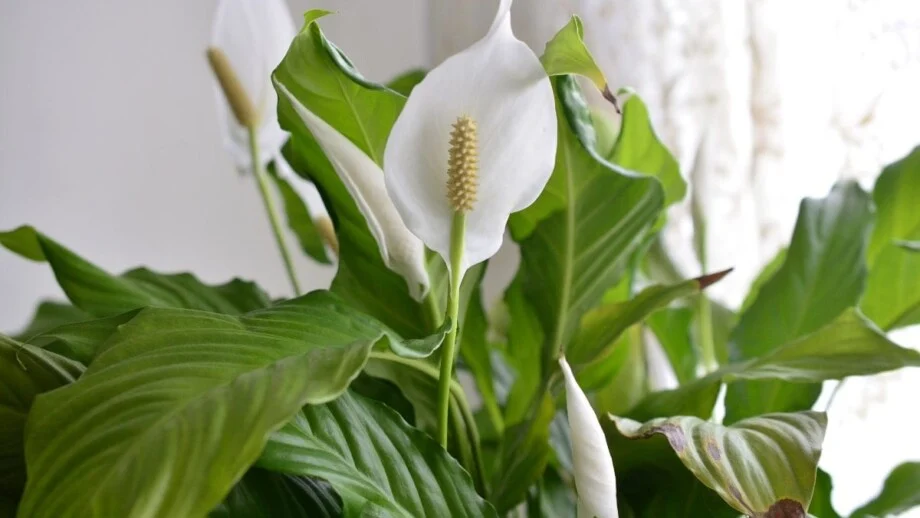
When to Repot:
- Every 1–2 years, preferably in spring
- When roots are pushing out of the pot
- If the plant becomes top-heavy or dries out too quickly
Repotting Steps:
- Gently remove the plant from its current pot.
- Tease apart tangled roots, trimming any rotten or overly long sections.
- Place it in a slightly larger pot with fresh soil.
- Water thoroughly and keep out of direct sun for a few days to reduce stress.
Pruning:
- Remove dead or yellow leaves regularly.
- Cut spent flower stalks at the base.
Chapter 9: Common Peace Lily Problems (and Fixes)
1. Brown Leaf Tips
- Cause: Fluoride in water, low humidity, or fertilizer burn
- Fix: Use distilled water and increase humidity
2. Drooping Leaves
- Cause: Underwatering (or occasionally overwatering)
- Fix: Check soil moisture and water accordingly
3. Yellow Leaves
- Cause: Overwatering or aging leaves
- Fix: Let soil dry out before watering; remove older leaves
4. No Blooms
- Cause: Insufficient light or overfertilizing
- Fix: Move to brighter location and reduce fertilizer
Chapter 10: Propagating Peace Lilies
Peace lilies are best propagated through division, not cuttings.
Steps to Propagate:
- Remove the mature plant from its pot.
- Gently separate clumps with at least 2–3 leaves and a healthy root system.
- Pot each clump in a new container with fresh soil.
- Water lightly and keep in indirect light.
Dividing your peace lily every couple of years keeps it healthy and allows you to grow your plant collection for free!
Chapter 11: Styling and Placement Ideas
Peace lilies are elegant and versatile houseplants. Here’s how to make the most of their visual impact:
- Place on side tables or bookshelves in low-light living rooms
- Add to bedroom corners to purify air and reduce stress
- Use large varieties as floor plants in entryways
- Group with ferns or pothos for a lush jungle vibe
Their simplicity complements minimalist, bohemian, and tropical decor themes alike.
Conclusion
Growing peace lilies is a rewarding and relaxing experience, especially for beginners. With just a little attention to their watering needs, light preferences, and tropical origins, peace lilies will thrive and bloom beautifully—bringing you joy, elegance, and cleaner air for years to come.
This easygoing plant teaches valuable lessons in plant care and appreciation. As you watch your peace lily thrive, you’ll gain the confidence to grow and care for other houseplants as well.
So, if you’re new to gardening, start with a peace lily—and let your plant journey begin with grace and greenery.





